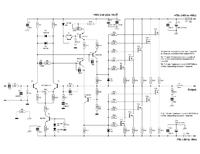c_mitra
Advanced Member level 6

- Joined
- Nov 13, 2012
- Messages
- 3,815
- Helped
- 929
- Reputation
- 1,860
- Reaction score
- 922
- Trophy points
- 1,393
- Activity points
- 30,142
.... some areas of audio are so full of misguided myths and ideas that you can end up going down a slippery slope.....
Sad but true.
Another problem is that most circuits come without elaborate detailed explanations and functional roles. As if we are trying to make a solderman rather than an engineer.




